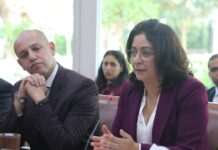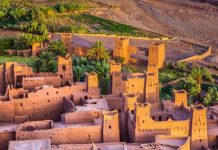Morocco’s tourism sector is experiencing record-breaking growth, outperforming national targets and solidifying its position as a major destination. Speaking before the House of Representatives on October 20, Fatim-Zahra Ammor, Minister of Tourism, Handicrafts, and Social and Solidarity Economy, detailed the government’s ongoing efforts to make Morocco even more attractive to travelers and investors alike.
The numbers speak for themselves. In 2024, Morocco welcomed 17.4 million tourists, reaching its strategic tourism roadmap goal two years ahead of schedule. That momentum has carried into 2025. By the end of September, over 15 million tourists had visited the country—a 14% increase compared to the same period the previous year. On the financial side, tourism revenues for the first eight months of 2025 totaled 87.6 billion dirhams in foreign currency, also up 14%.
This upward trend isn’t accidental. It reflects the concrete impact of the government’s roadmap, which includes expanding air travel options, launching targeted international marketing campaigns, and continuously improving the overall tourist experience. A new approach to tourism development, focused on nine theme-based segments and five cross-cutting sectors, allows each region to tailor its offerings according to its unique strengths.
To boost investment in the sector, several support programs have been rolled out. Among them, CAP HOSPITALITY offers interest-free loans to help renovate classified tourism accommodations, with a generous twelve-year repayment window and a two-year grace period. So far, 91 projects have benefited from this initiative.
A more recent investment framework provides up to 30% financial backing for new tourism ventures. The Mohammed VI Investment Fund has also allocated dedicated funding for the sector, underlining its importance to the national economy.
At the same time, the GO SIYAHA program is helping modernize 1,700 tourism businesses by 2026. With a budget of 720 million dirhams, it can cover up to 40% of a project’s total cost, targeting accommodations, leisure activities, and sustainable tourism initiatives. Over 1,100 operators have already signed on.
Several complementary tools are reinforcing this strategy. Regional development companies are providing hands-on support to local small and medium-sized businesses, while an online project bank lists more than 200 tourism initiatives available for investment across the country.
Minister Ammor stressed that, in line with directives from King Mohammed VI, the government is working to ensure that all regions benefit from this growth. While some areas still lag behind, development is underway. Expanding the range of available accommodations remains a central focus. The implementation of Law 80-14 now allows all types of lodging—from inns to rural guesthouses—to receive official classification and support.
Increasing domestic and international air connectivity is also high on the agenda. By improving access across the country, the ministry aims to lengthen average stays and generate economic activity in every corner of Morocco.





